April 2016 Vol 16 (2)
-

Nurse-led drug trial for 'orphan disease'
Venous leg ulcers (VLU) are an ‘orphan disease’ in which nurse researcher Dr Andrew Jull has a longstanding interest. He talks to Nursing Review about his team’s latest VLU research project – Asprin4VLU – his first, and one of New Zealand’s first ever nurse-led, randomised, controlled trials of a drug treatment.
-

Missing out on the ‘conversations that count’
After nursing patients with chronic kidney disease for more than two decades, Suzanne Joynt has seen the comfort and support that advance care planning (ACP) about end-of-life care can provide for patients and their families. So when her stepfather was diagnosed with a terminal illness, she hoped other nurses would be aware of its benefits too.
February 2016 Vol 16 (1)
-

A day in the life of an ED nurse
Finding a bed pronto for the guy clutching his chest while another patient's screams fill the waiting room is just part of the working day for Christchurch ED nurse Erin Dooley. Follow a day in her life as she switches from a FAST (focused assessment and supportive treatment) role to facing what seems a never-ending queue as triage nurse in one of Australasia's busiest emergency departments.
-
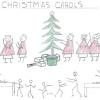
Fun in the ward: Stories of the good old, bad old days
Nurse researcher JOCE STEWART believes some fun and camaraderie in the ward can only be healthy for both nurses and patients. Nursing Review shares tales of laughter, mischief and collegiality amongst nurses in the 1970s and 1980s from Stewart’s thesis oral history research.
-

Māori and Pacific Nurses: Is burnout inevitable?
Nursing Review looks at the extra expectations that are often placed on Māori and Pacific nurses and shares some advice for nurses and workplaces on how to avoid the risk of burnout.
-

When nurses grieve
FIONA ROWAN asks how well the caring profession cares for its own when nurses lose loved ones and shares findings from her survey of 70 bereaved nurses that indicate New Zealand could do better.
-
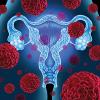
Gynaecological cancers: Silent no longer
More than 1,000 New Zealand women are diagnosed with gynaecological cancers every year and around 400 die of them – the majority from ovarian cancer. Nursing Review seeks to raise awareness of this female-only group of cancers, including why labelling ovarian cancer the ‘silent killer’ is not helpful, what obesity has to do with endometrial cancer, and how a vaccine can save lives. FIONA CASSIE reports.
-

We need to talk more about vulvas
A “very, very distressing” cancer that nobody talks about. This is how Christchurch gynaecological oncologist Bryony Simcock opened her address on vulval cancer to last year’s NZNO Women’s Health section conference.
-
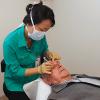
Nurses step up to meet demand for specialist eye treatment
New Zealand’s ageing population is experiencing an upsurge in common age-related eye diseases. Clinical nurse specialist VICKY MIYEONG YOU reports on an innovation at Greenlane Eye Centre that has seen nurses trained to deliver collaborative specialist treatment for one of these diseases – wet macular degeneration.
December 2015 Vol 15 (6)
-

Safe sleep: ask the uncomfortable questions
A safe sleeping advisor tells Nursing Review that nurses often have special opportunities to ask the questions that can make a difference to vulnerable families.
-
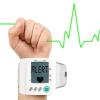
Electronic alerts a step closer
Paperless capture of vital signs is another step closer at Canterbury District Health Board with the rollout of electronic patient observations software and an early warning score (EWS) system now underway in the first ward. Nursing Review reports
-

UPDATE: Time to rethink the 12-hour shift?
Since Nursing Review published this shift work article earlier this year, New Zealand researchers have released a major literature review of the error rates of nurses working 12-hour shifts.
October 2015 Vol 15 (5)
-

Poor child health and housing: what’s being done?
Thousands of children turn up each year in hospitals with respiratory and skin conditions. Many of them return to damp, cold or overcrowded houses that further aggravate or caused the conditions in the first place. FIONA CASSIE talks to two nurses whose focus is working with families to prevent the adverse effects of sub-standard housing on child health.
-
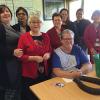
Housing stories from the frontline in South Auckland
Kidz First public health nurses see the reality of how Auckland’s housing crisis impacts on often struggling families. Seven nurses and their clinical nurse manager Lizzie Farrell share stories of some of the families they work and walk alongside.
-

One-stop-shop for books, coffee and child health
Rotorua is well on the way to having a New Zealand-first – if not a world-first – combination of a child health hub and a public library. FIONA CASSIE talks to Gary Lees, the director of nursing for Lakes District Health Board to find out more.
-

Flu shot: masking the issue?
Three Waikato DHB frontline staff were suspended this winter for refusing to wear a mask after declining the flu vaccine. FIONA CASSIE looks at the sometimes fraught issue of infection control campaigns that aim to reduce the risk of influenza by increasing the vaccination levels of nurses and other healthcare workers.
-
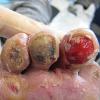
Debridement: sloughing away to aid healing
Debridement can be simple and slow or quick and complex. FIONA CASSIE finds out from wound care nurse specialist Emil Schmidt some of the ‘whys’ ‘wheres’ and ‘hows’ of simple debridement – and when to call in the experts.
-

Time for nurses to speak up for health equity?
TAIMA CAMPBELL argues it is time for nursing as a profession to face up to and speak out about the health inequities that result in poorer health outcomes for Māori.
-
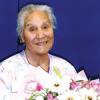
Tributes for nursing treasure Putiputi O’Brien
Nursing taonga Putiputi O’Brien RN QSO passed away in August aged 93. NGAIRA HARKER, HEMAIMA HUGHES and KERRI NUKU pay tribute to this special nurse.
-

Steady but slow steps towards RN prescribing
Nursing Review updates the next steps towards widened registered nurse prescribing in, hopefully, 2016.
August 2015 Vol 15 (4)
-
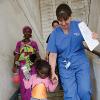
A day in the life of a Mercy Ship nurse
Sue Clynes' clientele is the poorest of the poor living with heartbreaking conditions of the face and jaw. Find out more about her life living and working on board the Africa Mercy hospital ship as the volunteer nurse leader of the maxillofacial team.
-

Career path: mental health nurse educator
A tight job market on graduation saw MEL GREEN enter mental health, then a supportive new graduate programme after realising how nursing can make a difference to people’s mental illness experience. Leadership opportunities saw her make it a career.
-

Career path: aged residential care (clinical services manager)
Migrating to New Zealand saw JINSU SHINOY fall into a job in residential aged care and never look back.
-

Career path: nursing school lecturer and researcher
The eye is small and should be ‘pretty easy to learn’ thought ELISSA McDONALD but, an ophthalmology PhD later, the now nursing school lecturer knows how wrong she was.
-

Career path: clinical nurse specialist on NP pathway (private surgical hospital)
Nursing mentors have been instrumental in helping clinical nurse specialist JESSICA ONGLEY along her career path towards her ultimate goal of becoming a nurse practitioner.
-

Libraries: informing nurses anytime, anywhere
What do today’s modern libraries offer nurses who walk through their doors or, more frequently, login online? FIONA CASSIE talks to district health board librarians VIV KERR and PETER MURGATROYD.
-
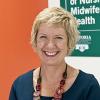
Where are our nursing leaders? Closer than you think
OPINION: JO ANN WALTON says it is time to stop hoping some ‘mythical matrons’ – a la Florence – will emerge to lead the nursing profession to new heights. Instead, she argues, it is time to recognise the everyday leaders working amongst us.
-

Māori nurse educators: sustaining a Māori worldview
NGAIRA HARKER says a plan to foster and grow the Māori nurse educator workforce is critical to meeting future health workforce needs.
-

Does zinc help ‘sink’ cold symptoms?
It’s cold season; your nose is running and your throat is sore. CYNTHIA WENSLEY looks at the evidence for zinc as a cold remedy.
-

Fad diets article feedback
The last edition of Nursing Review contained an article called ‘Fad diets: what do dietitians say about the latest crop?’ that looked at some of the latest dietary trends; in particular, the Paleo diet, the 5:2 intermittent fasting diet, the no-sugar approach and the low-carb, high-fat (LCHF) approach.
-

Nurse attrition rate a cause for concern
The Nursing Council of New Zealand recently released the latest report in its Nursing Cohort longitudinal study, which includes an update on the number of nurses registered in the 2005/06 year who are still nursing in New Zealand. While the numbers, including new data on nurses first registered in 2012/13, are worryingly low, it’s not all doom and gloom. FIONA CASSIE reports.
June 2015 Vol 15 (3)
-

Fad diets: what do dietitians say about the latest crop?
Any diet that bans fruit has to raise eyebrows. The same goes for a diet that advocates lashings of cream and butter with every meal. The demonising of one food group as the source of all dietary evil, or the fixation on another as a saviour, is often the key selling point for the latest fashionable weight loss diet.
February 2015 Vol 15 (1)
-

Q&A with Lorraine Hetaraka-Stevens
Lorraine Hetaraka-Stevens is the first nursing director for the country's largest PHO, ProCare. Check out who inspired her to go nursing, her wish list for nursing and why she'd like to head to Vietnam some day.
-

Day in the life of a ... clown doctor
Zack McCracken was a nurse for 15 years before she left to pursue her love of acting. Now she combines her passion for theatre and healthcare by working as a clown doctor.
-

Coping with shiftwork: is there a perfect roster?
Shiftwork isn’t natural, and long-term it isn’t healthy – but it is essential for modern health care. So the challenge is to minimise the risks and maximise any lifestyle benefits. FIONA CASSIE talks to a sleep physiologist and nurse leaders to find out how to do just that.
-

Sexuality: keeping it ‘normal’
Sexuality is central to being human but is not always a topic we are ready to discuss indepth over a cup of coffee or raise with our patients. Nursing Review asked Mary Hodson, a therapist specialising in emotional and sexual intimacy, to share some thoughts on maintaining your sexual wellbeing.
-

Mental health matters: boosting nurses’ wellbeing
Four years on, Christchurch’s nurses are still driving on bumpy roads to workplaces that are often temporary or under repair before returning to a home that may still be cracked or leaking. And with a $650 million rebuild, redevelopment and reshuffle of hospital services underway over the next four years and increasing demand for mental health services, it seems there is little relief in sight.
-

Wellbeing messages relevant to all
FIONA CASSIE talks to SUE TURNER, manager of Canterbury’s All Right? wellbeing initiative, about one small silver lining of the quakes – people’s awareness of their own mental health – and how All Right? is helping people restore and maintain their personal wellbeing.
-

Free app for fun times with kids
A toolkit of quick, fun activities for kids first developed to help quake-stressed parents is now a free smartphone app available across the country.
-

Skin care for the busy nurse
Looking after our skin often comes a distant second to extramural study, full-time work and looking after family in the busy world of today’s nurses. Cosmetic nurse LARA MOLLOY shares some practical and quick skin care tips for nurses on the go.
-

Keeping leakage at bay
Is one-off advice on pelvic floor exercises enough to keep urinary incontinence at bay? This edition’s critically appraised topic (CAT) looks at whether pelvic floor muscle training makes a difference.
-
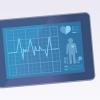
Balancing the ‘e’ and ‘health’ in e-health
KATHY HOLLOWAY looks at e-health from a nursing perspective and the need to remember that the ‘e’ should stand not just for ‘electronic’ health but for ‘enhanced’ health.
-

A decade on: MECA pay talks underway again
On 28 February the fourth national MECA pay agreement between 20 district health boards and the New Zealand Nurses Organistion expired. FIONA CASSIE backgrounds the talks and some of the history leading up to the latest negotiations.
December 2014 Vol 14 (6)
-
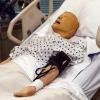
Simulation the answer to relieve pressured nurses?
Can you halve the time student nurses spend on the ward or with a nurse in the community and still train a clinically competent nurse? A major US study has proven you can by replacing half the traditional clinical placement hours with quality simulation scenarios.
-
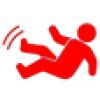
Electronic whiteboard frees up nursing time
JODIE and PETER WOOD report on how a Whangarei Hospital orthopaedics ward developed a customised electronic whiteboard to give nurses patient details at a glance and help free up more time for direct patient care.
October 2014 Vol 14 (5)
-

Youth services making a difference on a shoestring
Young people walking through the door of Youth One Stop Shops around the country are offered a holistic, wraparound service that many nurses aspire to. FIONA CASSIE learns that it comes at the cost of a continuous funding struggle to keep the – often nurse-led – youth health services running.
-

A day in the life of a ... school nurse
Heather Laxon's job as a school nurse at Mangere College is a lot more complicated than the stereotype of patching scraped knees. Read on to discover the complexities the modern school nurses faces.
-
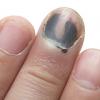
Ouch: crushed fingers and purply-black nails
Fingers may be small but wounds to them can be disproportionately painful and debilitating. FIONA CASSIE seeks first aid advice for nurses from emergency NP Margaret Colligan on crushed fingers and other common finger wounds.
-

Burn injuries: spills, flares, flames, and the wounding results
Every year, more than 20,000 claims are made to ACC for burn injuries. Burn clinical nurse specialists Deborah Murray and Jackie Beaumont see many of the worst of them. FIONA CASSIE gets advice from the pair about first aid and management of minor burns for nurses in the community and discovers there is no such thing as a ‘simple’ burn.
-
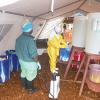
Ebola: how prepared is New Zealand?
As Nursing Review went to press, three nurses in Western hospitals had acquired Ebola after caring for patients originally infected in West Africa. Though the chance of an Ebola victim arriving in New Zealand still remains very slim, both the Ministry of Health and the Infection Control Nurses’ College believe the devastating West African epidemic is a good wake-up call.
-

Helping children survive and thrive
FIONA CASSIE talks to nursing leader and Children's Team member Sonia Rapana about her role in the Children's Team initiative to help children not only survive but also thrive.
-

Q&A with Anne Brebner
New Zealand College of Mental Health Nurses President Anne Brebner describes her career progression, what she loves most about being a nurse leader, and how she would improve the New Zealand health system.
-

Out, damned spot! Out, I say!
MARGARETH BROODKORN takes a look at the chequered history of hand washing and asks whether today's health professionals have progressed that much?
-

Nurses wanted: what DO you do to earn your pay?
Nurses nationwide are invited to take part in a major online survey hoping to pinpoint the real differences between a staff nurse and a specialist nurse’s daily work.
June 2014 Vol 14 (3)
-

Dying unequally: striving for mental health patients to be equally well
Long-term mental health clients die prematurely at up to three times the rate of the rest of the New Zealand population. FIONA CASSIE finds out how nurses have been responding to long-standing calls to improve the physical health of people with long-term mental illness.
December 2012
-

Diabetes e-learning site launched for PHC nurses
A free online learning programme to help primary health care nurses meet the growing demands for diabetes care is being offered on a newly launched website.
November 2010 Vol 11 Issue 7
-

Men’s health: more than throwing a pill
web p BruceYarwood2 Bruce Yarwood is a bloke and a practice nurse. If that combination is not rare enough, the practice he works in is dedicated to men’s health. Fiona Cassie finds out more about this army nurse manager turned men’s health specialist.
July 2010
-

EN conference celebrates new future
Enrolled nurses celebrated the rebirth of their role on National Enrolled Nurses’ Day on the opening day of a conference attended by nearly 230 ENs.
-

Aged-Care contract recognises NPs
Writing nurse practitioners into the residential aged-care services contract is being welcomed as a positive step forward.
-

Hutt DoN returns to mental health
Hutt Valley District Health Board director of nursing Toni Dal Din has returned to his nursing roots in taking on a mental health leadership position. Dal Din has headed down the valley to take up the position at Capital & Coast DHB as associate director of nursing for mental health. He said his grounding was in mental health and he had kept his eye on the sector, so when the mental health position came up at Capital & Coast for the first time in 10 years, he was keen. Dal Din held the mental health portfolio on the national nurse executive group NENZ, along with Magnet hospitals, and had always retained a passion for mental health. Meanwhile Mark Davies is the interim director of nursing at Hutt Valley DHB. Davies is currently nurse manager of the board’s emergency department and also has a background in mental health.
-

Nurses stroke forum
More than 60 stroke nurse leaders from across the country attended the Ministry of Health’s stroke forum held in June. The ministry said nearly all 20 district health boards were represented, plus a number of aged-care facilities and organisations, and it was good to see nurses connecting and developing a strong stroke nursing network.
-

Newly created PHC college looks to the future
Newly created PHC college looks to the future
-

New MH College leader elected
Mental health nurse and academic Daryle Deering has been elected new president of the College of Mental Health Nurses (Te Ao Maramatanga). The former vice-president was elected to replace outgoing chair Heather Casey who has completed her four-year term. Deering was director of mental health nursing for the Canterbury District Health Board from 2000 to 2007 and currently holds a joint clinical/research position with the board and the University of Otago, Christchurch. The senior lecturer is based at the university’s National Addiction Centre and her clinical and research focus is working with people with alcohol dependence and depression. She also coordinates a postgraduate interdisciplinary paper on the treatment of people with co-existing substance abuse and mental health problems. Deering believes the college has a primary role in the future of mental health nursing through “collaborative working and partnerships with other professional nursing and interdisciplinary bodies, consumers, and a range of other networks”.
-

Iodine for pregnant women
From July 1 the Ministry of Health has added iodine as a recommended supplement for pregnant and breastfeeding women, with subsidised tablets available. Dr Pat Tuohy, the ministry’s chief advisor on child and youth health says: “Pregnant and breastfeeding women have increased iodine requirements and in spite of a good diet and mandatory fortification of bread with iodised salt (introduced late 2009) they remain at risk of inadequate iodine intakes. Not enough iodine can result in impaired brain function and impaired growth and development in the unborn baby and young infant. Drug-buying agency PHARMAC is now subsidising a New Zealand-made iodine tablet providing the recommended 150mcg daily dose, which can be prescribed or bought over the counter at pharmacies. Iodine deficiency problems in New Zealand lead to table salt being iodised in 1924 and the level increased in 1938, but the ministry says recent research indicated further intervention was needed to stop iodine deficiency disorders from once again widely affecting the New Zealand population. The re-emergence of iodine deficiency is thought to be due to increased consumption of commercially prepared food mostly made with non-iodised salt, the declining use of iodine sanitisers by the dairy industry and generally reduced salt intakes.
-

Smoking cessation
The effectiveness of a medication to help quit smoking is examined in this edition’s clinically-appraised topic.
-

Reaching out to the hard-to-reach
For nearly two decades the WONS health trust has been reaching out to Auckland women who otherwise fall below the radar of the health service. FIONA CASSIE talks to WONS founding trustee, nurse and CEO Ruth Davy about their work.
-

High-tech birth places
Major New Zealand midwifery research into 16,000-plus low-risk women’s births has found “astounding results”. The more high-tech the hospital is you plan to give birth in, the more likely you are to end up with an emergency caesarean and a baby in neonatal intensive care.
-

More support post-miscarriage needed says PhD scholar
Better funding is needed to improve the health workforce’s support of women after miscarriage, says midwife Cassie Kenney whose PhD looked at miscarriage.
-

Nurse practitioners: changing the landscape of health care delivery
Youth health NPs GILL ALCORN and REBECCA ZONNEVELD report back on the work of nurse-managed health centres in the US.
-

Resource kit to follow successful MH supervision pilot
Professional supervision increased confidence and improved practice, the evaluation of a Northland training pilot found.
June 2010
-

EN transition prompts fears
Strong employer support is needed to overcome fears of some enrolled nurses about transitioning to the new scope of practice, said Robyn Hewlett, chair of NZNO’s Enrolled Nurse Section.
-

Plunket 'Book' to go high-tech
Plunket nurses are to replace pen and paper with a new high-tech IT system that could enable parents to update a child’s file online.
-

Winning whistlestop tour of the US
-

Vaccination prevents HPV infection long term
This month’s clinically appraised topic looks at a major study’s findings into the long-term effectiveness of the HPV vaccine
-

From asthma to pneumonia: how good are your respiratory nursing skills?
Be it asthma or pneumonia, every nurse at some point cares for someone with a respiratory condition. Helping nurses evaluate their respiratory nursing skills or guide their development as a specialist is the aim of a soon-to-be-finalised knowledge and skills framework. Fiona Cassie finds out more.
-

The enigma* of men's health
A UK men’s health project that took its strategies to betting shops, pubs and sports clubs is the f ocus of Bruce Yarwood’s article marking International Men’s Health Week
April 2010
-

PHC survey shows expanded role
About half of primary health care nurses currently provide nurse-led clinics, according to an online survey by the College of Practice Nurses.
March 2010
-

Briefs
Standing orders consultation
-

Prescribing trial sought for diabetes nurses
A trial of diabetes nurse specialists with prescribing rights is a step closer with a special regulation proposal now on the agenda. The fate of the proposed pilot hung in the balance late last year as ways forward appeared hampered by legislative barriers under the Medicines Act.
-

An NP in the community
FIONA CASSIE talks to DEB GILLON, one of the country’s newest NPs in one of the rarest roles – an aged care NP in the community
February 2010
-

Nurse assistant courses still popular
Nursing schools report steady and even strong interest in training programmes for nurse assistants as they and their students await details of the enrolled nurse programme that will replace the NA role.
-

Registrar-style programme proposed for NPS
The first steps to developing a registrar-style programme for fledgling nurse practitioners are being taken by the Nurse Practitioners Advisory Committee (NPAC).
-

Survey highlights aged-care issues
Unregulated caregivers are frequently being called on in residential aged-care facilities to do registered nurse tasks, a caregiver survey has found.
January 2010
-

Not to offer NRT a sentinel event?
Pictured from left are Evelyn Hikuroa, leader of the NSFANZ Maori strategy and senior lecturer at Manukau Institute of Technology; Grace Wong, director of NSFANZ and senior lecturer at Auckland University of Technology; and Pauline Allan-Downs, member of the Ministry of Health Smoking Cessation ABC Approach Steering Group.










